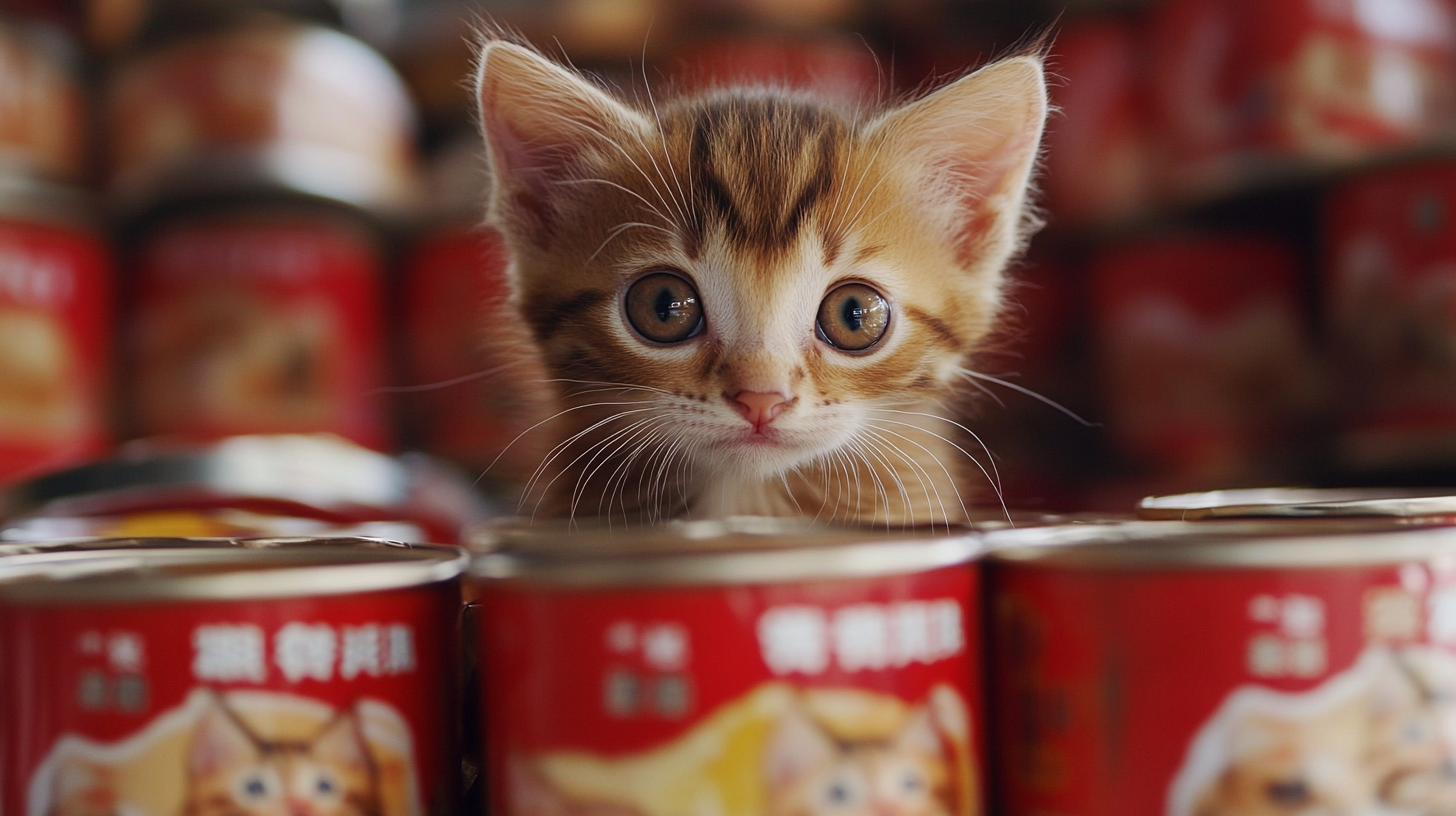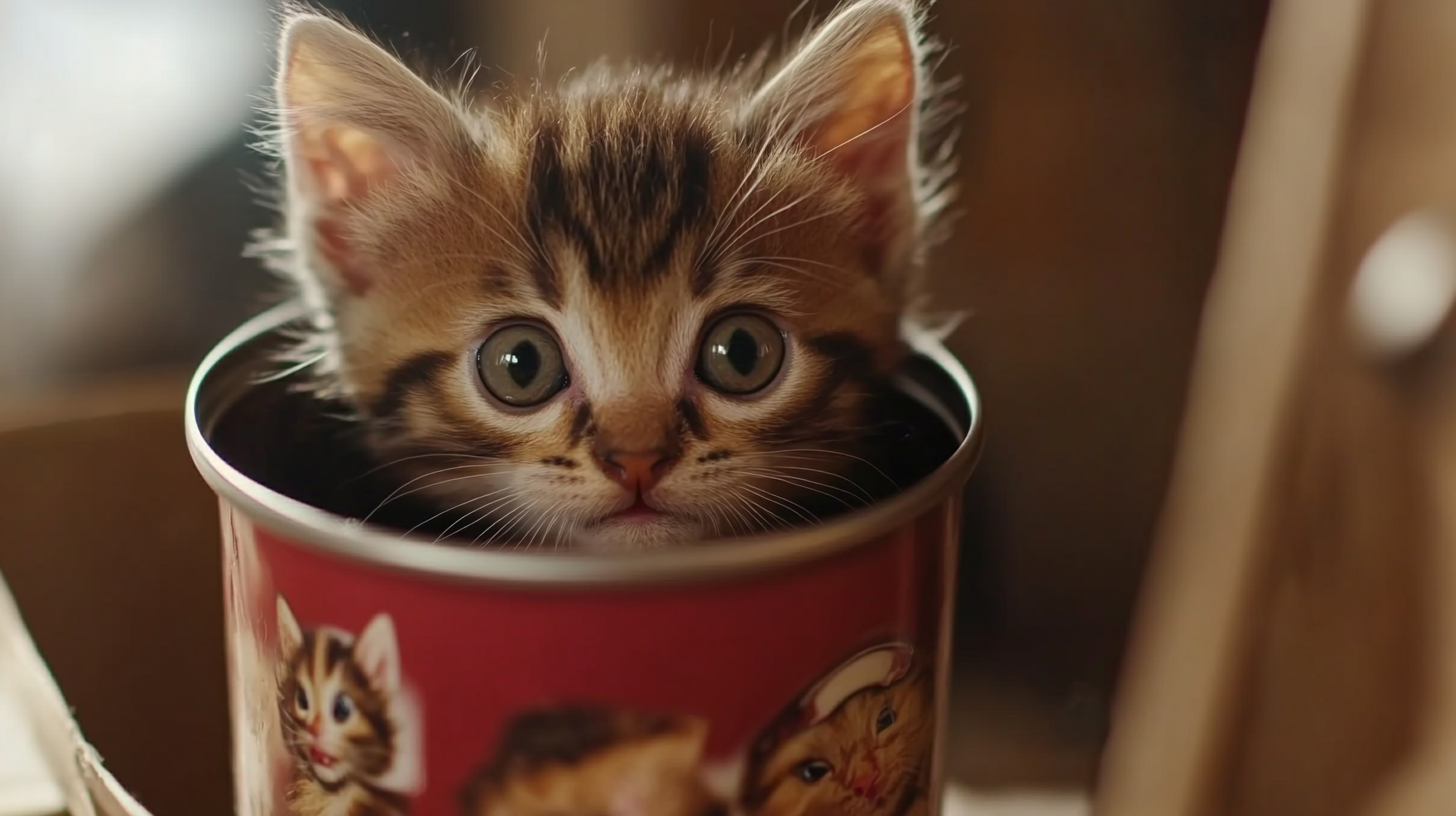The surge in demand for canned kitten food is becoming increasingly pronounced, as pet owners in the United States seek high-quality nourishment for their feline companions amidst the ongoing tariff challenges resulting from US-China trade relations. According to a recent report by the Pet Food Institute, the pet food market in the U.S. is projected to grow by $10 billion over the next five years, with canned kitten food accounting for a substantial portion of this growth due to its convenience and nutritional benefits. Despite the tariffs imposed on imported goods, data indicates that Chinese manufacturers are experiencing a counter trend, with a reported 15% increase in exports of canned kitten food. This remarkable resilience showcases not only the adaptability of the industry but also underscores the strong demand for high-quality, canned options that cater to the evolving needs of pet owners. As consumers increasingly prioritize their pets' health and well-being, the canned kitten food segment remains a dynamic area for growth and innovation.

The recent surge in sales of canned kitten food can be attributed to a combination of escalating trade tensions between the U.S. and China, alongside the growing trend of pet ownership in American households. According to a report by the American Pet Products Association, pet ownership in the U.S. reached a record high of 70% of households in 2023, with a significant proportion of those households welcoming kittens. This growth in ownership has driven an increase in demand for high-quality, convenient pet food options, particularly canned varieties that offer palatability and easy digestion for young felines.
Additionally, the trade tariffs imposed on various goods have led to increased prices for some pet food products, influencing consumer behavior as pet owners become more discerning in their purchases. The market analysis from Mordor Intelligence indicates that the global canned pet food market is expected to grow at a CAGR of 4.5% through 2025. This trend highlights not only the resilience of the pet food sector amidst trade challenges but also the growing consumer desire for premium offerings. Consequently, brands that invest in quality ingredients and sustainable sourcing can expect to capture a larger share of this burgeoning market.
The chart above illustrates the surging sales of canned kitten food from 2019 to 2023, highlighting a significant increase, particularly in the last two years. This trend reflects the growing demand for quality pet food amidst escalating trade tensions between the US and China.
The increasing demand for high-quality canned kitten food is coinciding with significant challenges posed by U.S.-China tariffs, which are affecting consumer behavior and food prices across the pet food market. As tariffs on imports rise, consumers are witnessing price hikes on various pet products, leading many to reassess their purchasing strategies. In fact, reports indicate that the price of pet food has surged by over 12% in the past year alone, largely attributed to the escalating trade tensions and tariffs on key ingredients sourced from abroad.
In this landscape of economic uncertainty, pet owners are advised to consider stockpiling essentials, particularly canned kitten food, which remains a staple for many cat owners. Choosing domestic brands, when possible, can mitigate some of the costs associated with tariffs. Additionally, being proactive about purchasing can save consumers from potential price increases in the near future.
Consulting industry analyses reveals that the pet food sector continues to thrive despite these challenges, with spending projected to reach nearly $100 billion this year. This resilience demonstrates the steadfast commitment of pet owners to provide the best for their furry companions, regardless of economic conditions. As the market evolves, keeping an eye on price trends and adapting shopping habits can ensure both affordability and quality in pet nutrition.
The demand for the best canned kitten food in the U.S. is surging, particularly as challenges arise from tariffs imposed on imported goods from China. As manufacturers adapt to these trade barriers, China's export capabilities in this sector are expanding. The country's ability to produce high-quality canned kitten food at competitive prices allows them to not only meet domestic needs but also cater to international markets despite ongoing tariff struggles.
One tip for cat owners looking for the best options is to prioritize brands that emphasize high-quality ingredients and transparent sourcing. This ensures that your kitten is receiving the essential nutrients without harmful additives. Additionally, look for companies that are mindful of sustainability, as many consumers are now inclined to support environmentally responsible brands.
When choosing canned food, it’s also helpful to pay attention to the nutritional information on the label. Opt for products with a higher protein content suitable for kittens’ growth. Consult your veterinarian for personalized recommendations that align with your kitten’s dietary needs. By making informed choices, cat owners can navigate the evolving market while ensuring their pets receive only the best nutrition.

The demand for high-quality canned kitten food has surged in 2023, driven by key nutritional trends that cater to the health-conscious pet owner. According to a recent report from the American Pet Products Association, 68% of pet owners are prioritizing nutrition and quality over price when selecting food for their felines. This focus on health has led to a notable rise in the popularity of grain-free options, which accounted for 32% of sales in the canned kitten food category last year. Such dietary preferences reflect a shift towards minimal ingredients that promote better digestion and overall wellness for kittens.
Additionally, there's an increasing interest in protein-rich formulas, with data from Market Research Future indicating that the global pet food market for high-protein options is projected to grow at a CAGR of 6.73% from 2021 to 2028. Brands are innovating by incorporating premium proteins like chicken, turkey, and fish, fortified with essential vitamins and minerals, which appeal to pet owners seeking holistic nutrition for their growing pets. This shift is further amplified by the growing awareness of the long-term health benefits associated with high-quality ingredients, driving more consumers towards premium canned kitten food products amidst ongoing tariff challenges.

The canned kitten food market is experiencing a notable shift as consumer preferences evolve amidst US-China tariff challenges. According to a recent report from the American Pet Products Association, the demand for premium pet food, particularly canned options, has surged by over 25% in the last year alone. This trend highlights a growing consumer inclination toward high-quality and nutritious options for their pets, influenced by health awareness and the humanization of pets. As pet owners increasingly seek to provide their kittens with the best possible nutrition, manufacturers are adapting their offerings to meet these rising expectations.
Moreover, pet spending patterns indicate a significant shift towards online shopping, with a 30% increase in e-commerce sales of pet food during the past 12 months, as reported by Nielsen. With the ongoing tariff challenges impacting the prices of imported goods, consumers are becoming more price-sensitive while simultaneously willing to invest in value-driven products. Brands are responding by enhancing their marketing strategies and product formulations, emphasizing sustainability and ingredient transparency to capture the attention of discerning pet owners. As these trends continue to shape the kitten food industry's future, companies must remain agile and attuned to the changing demands of consumers.
| Brand | Average Price ($) | Market Share (%) | Consumer Rating (out of 5) | Sales Growth (2022-2023, %) |
|---|---|---|---|---|
| Brand A | 12.99 | 25 | 4.5 | 20 |
| Brand B | 10.99 | 30 | 4.8 | 25 |
| Brand C | 14.49 | 20 | 4.2 | 15 |
| Brand D | 11.99 | 15 | 4.6 | 18 |
| Brand E | 13.49 | 10 | 4.0 | 10 |
